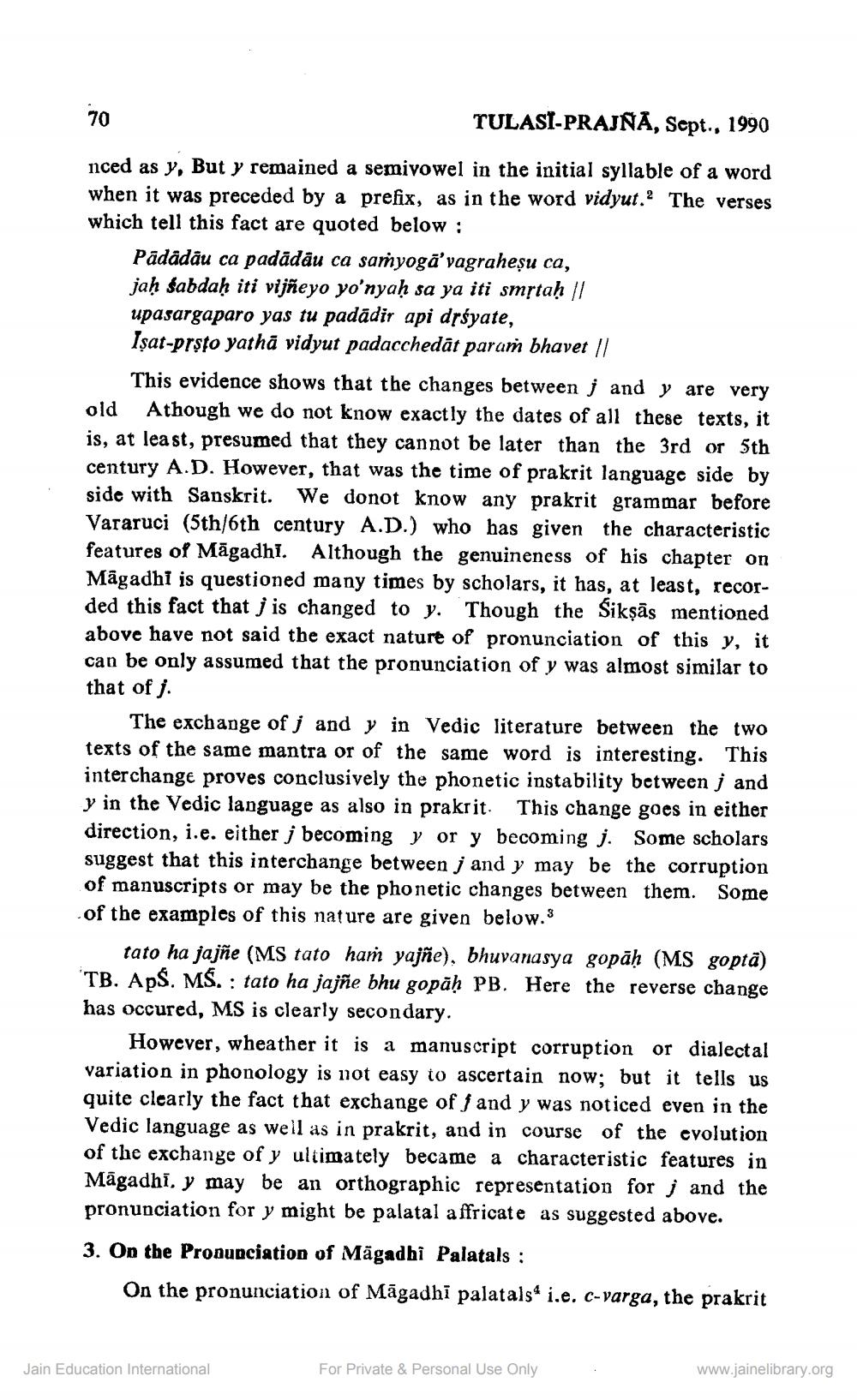________________
TULASI-PRAJNA, Sept., 1990
nced as y, But y remained a semivowel in the initial syllable of a word when it was preceded by a prefix, as in the word vidyut. The verses which tell this fact are quoted below :
Pādādāu ca padādāu ca saryogā'vagraheșu ca, jaḥ sabdaḥ iti vijñeyo yo'nyaḥ sa ya iti smstaḥ || upasargaparo yas tu padādir api drśyate, Isat-prsto yathā vidyut padacchedāt paraṁ bhavet //
This evidence shows that the changes between j and y are very old Athough we do not know exactly the dates of all these texts, it is, at least, presumed that they cannot be later than the 3rd or 5th century A.D. However, that was the time of prakrit language side by side with Sanskrit. We donot know any prakrit grammar before Vararuci (5th/6th century A.D.) who has given the characteristic features of Māgadhi. Although the genuineness of his chapter on Māgadhi is questioned many times by scholars, it has, at least, recorded this fact that j is changed to y. Though the Sikşās mentioned above have not said the exact nature of pronunciation of this y, it can be only assumed that the pronunciation of y was almost similar to that of j.
The exchange of j and y in Vedic literature between the two texts of the same mantra or of the same word is interesting. This interchange proves conclusively the phonetic instability between j and y in the Vedic language as also in prakrit. This change goes in either direction, i.e. either j becoming yor y becoming j. Some scholars suggest that this interchange between j and y may be the corruption of manuscripts or may be the phonetic changes between them. Some of the examples of this nature are given below.3
tato ha jajñe (MS tato ham yajñe), bhuvanasya gopāḥ (MS goptā) "TB. ApS. MŚ. : tato ha jajñe bhu gopāḥ PB. Here the reverse change has occured, MS is clearly secondary.
However, wheather it is a manuscript corruption or dialectal variation in phonology is not easy to ascertain now; but it tells us quite clearly the fact that exchange of sand y was noticed even in the Vedic language as well as in prakrit, and in course of the evolution of the exchange of y ultimately became a characteristic fes Māgadhi, y may be an orthographic representation for j and the pronunciation for y might be palatal affricate as suggested above. 3. On the Pronunciation of Māgadhi Palatals :
On the pronunciation of Māgadhi palatals* i.e. C-varga, the prakrit
www.jainelibrary.org
Jain Education International
For Private & Personal Use Only




